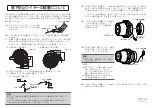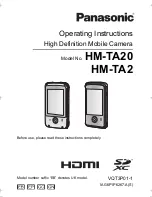
NVIP
-
8SD
-
6550/32/F Quick start guide version 1.0
All rights reserved © AAT SYSTEMY BEZPIECZEŃSTWA Sp. z o.o.
10
START
-
UP AND INITIAL CONFIGURATION
2.2. Connecting ethernet cable
To maintain tightness of ethernet cable connection, please follow instruction below:
1. Unscrew the nut (b) from the connector cover (a), put the sealing ring on the socket (c)
2. Route the network cable through parts (a) and (b). Insert the RJ
-
45 plug into the socket (c)
3. Screw the connector cover (a) onto the socket (c). Press the cable seal (d) into the upper part of the
connector cover (a) as far as it will go
-
the seal has a cut enabling it to be put on the cable.
4. Tighten the nut (b) as far as it will go.
Caution!
The other connectors are not hermetic. The user should ensure the tightness of these sockets on
his own.
2.4. Power supply connection
The camera can be powered from AC or DC power supplies available on the market, provided that it
meets the technical requirements of the camera. The power supply must provide a voltage of 24V, it
must allow the consumption of at least 45W of power, and have a 2.5/5.5 cylindrical power plug
(voltage polarity in the plug does not matter).
It is also possible to power the camera via the RJ45 network socket, using devices compliant with the
PoE++ standard (IEEE 802.3bt Class 6)
Caution!
Do not use power supplies and POE adapters that do not comply with the IEEE 802.3bt
standard, the so
-
called "passive POE" power supplies. Damage resulting from the use of an
unsuitable adapter is not covered by the warranty!
b
a
b
a
c
d
It is allowed to simultaneously power the camera from the 24V power supply and the PoE++
switch. In this case, the 24V power supply has priority.











































